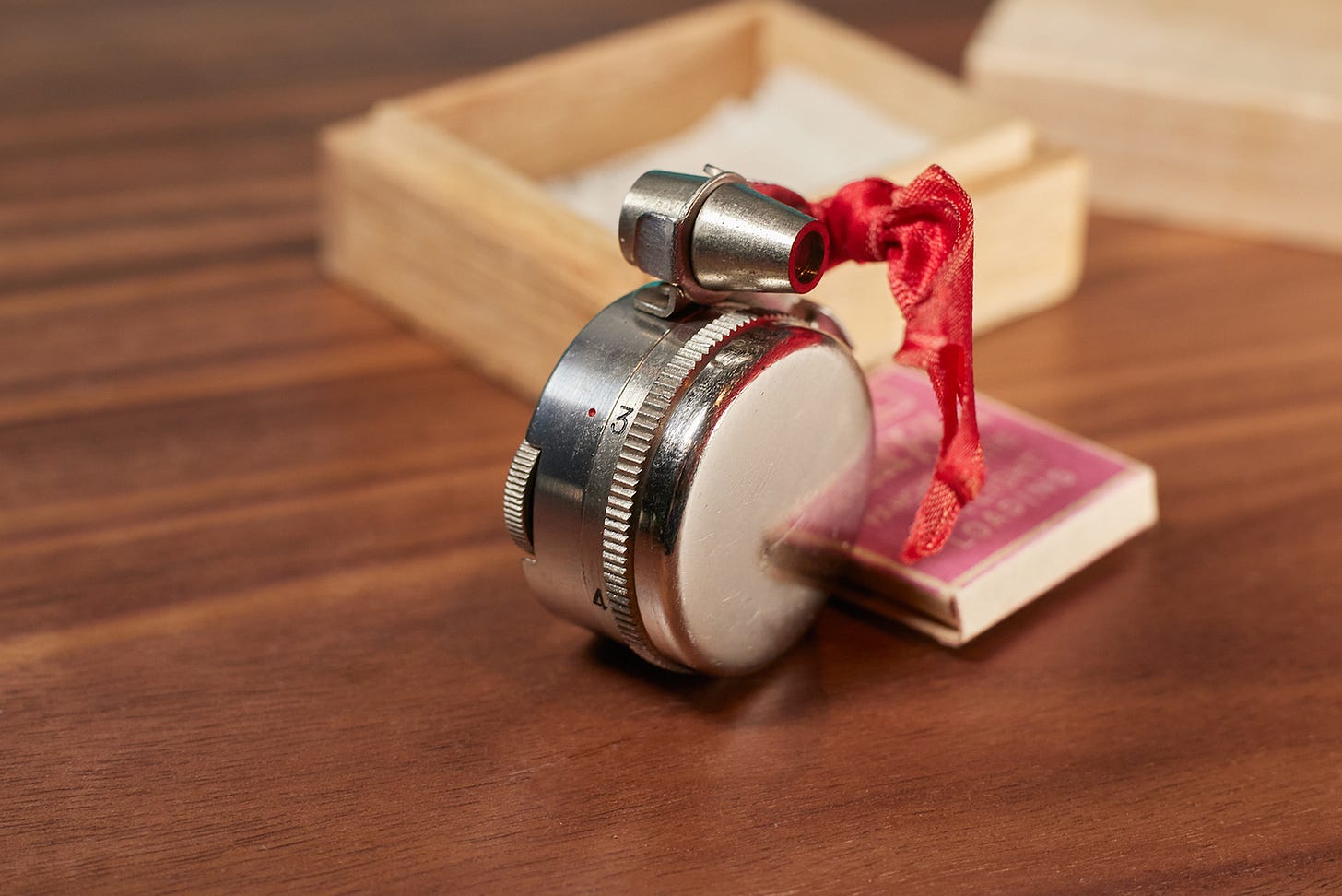Random objects: the Petal camera
The artifacts of spycraft in occupied Japan.
Most of us would probably peg the 1960s or the 1970s as the golden age of Bond-esque spy gadgets; the period brought us everything from poison-injecting umbrellas, to lipstick guns, to exploding cigars. We also wouldn’t think of Japan as a likely source of such fare. After all, it wasn’t until the 1980s that the country developed a reputation for making miniaturized, high-quality consumer goods.
Yet, the smallest mass-manufactured film camera didn’t come out of an industrial conglomerate in Germany and wasn’t the brainchild of an eccentric inventor in the United States. No, this title belongs to the quarter-sized Petal — a mechanical wonder developed and produced in the impoverished, still-occupied Japan around 1947:
The camera is quite functional for its size. The device uses 25 mm disks that are loaded and unloaded by unscrewing the back; clever canister design permits film to be replaced under normal light.
Each photo is recorded by exposing a small circular area, around 6 mm in diameter — still enough to permit small but reasonably legible prints. A knurled disk is then manually advanced to allow a total of six images to be recorded on each cartridge.
The camera has two exposure modes, selected with a smaller knurled knob visible in front. The “I” setting (“instant”) causes the shutter to open for about 1/25th of a second; the “B” setting (“bulb”) keeps it open for as long as the shutter lever is pressed, permitting rudimentary low-light photography. The final touch is a miniscule, barely-usable tubular viewfinder sitting next to the shutter lever.
Perhaps because of the then-low standard of living in Japan, the cameras were meant primarily for export, and came with detailed English-language instructions printed on incredibly thin, translucent paper. Despite its delicate appearance, it held up admirably well:
Today, we can effortlessly cram high-quality CMOS image sensors, micromachined optics, and batteries into an even smaller envelope. Still, the artifacts of precision manufacturing in the early 20th century are nothing to sneeze at — and sometimes crop up where you least expect.



